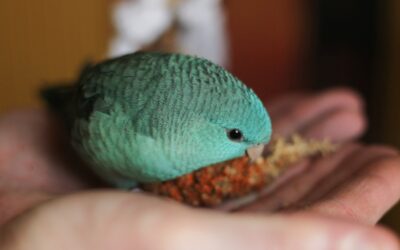Knowing the signs of ear mites in cats is vital. In the mysterious world of feline health, ear mites are tiny parasites that pack a punch. These pesky invaders, known as Otodectes Cynotis Mites, thrive in the cozy confines of a cat’s ear canal.
Often too small to be seen with the naked eye, these critters are responsible for causing severe irritation and discomfort in our beloved pets.
Ear mites are highly contagious and can lead to suspected ear infections if not treated promptly. For cat owners, understanding the nature of these mites is crucial to keeping your kitty healthy and happy. Ear mites primarily reside in the outer ear and ear canal, feeding on wax and oils found in a cat’s ears.
This feeding frenzy causes the cat’s ear to become itchy, leading to excessive scratching and head shaking. If left untreated, the ear mite infestation can spread to other parts of the body or even to other household pets. Recognizing the clinical signs of ear mites can help you intervene early and prevent further complications.
For many pet parents, the presence of ear mites can be distressing. However, with the right knowledge and approach, these tiny parasites can be effectively managed. In this guide, we will explore the signs, causes, and treatment options for ear mites in cats, empowering you with the information needed to protect your furry friend.

Recognizing the Signs and Symptoms
The symptoms of ear mites are often subtle at first but can escalate quickly. One of the most noticeable signs is your cat’s incessant scratching of its ears. This excessive scratching is a result of the ear irritation caused by the mites and can lead to severe skin damage if not addressed.
Recognizing the signs and symptoms of ear mites in cats is essential for early detection and treatment. Common indicators include:
Excessive Scratching
Cats may scratch their ears frequently due to irritation caused by ear mites.
Head-Shaking
Affected cats often shake their heads vigorously to alleviate discomfort.
Dark Discharge
You may notice around the ears, a dark, crusty waxy discharge in the ear canal, which resembles coffee grounds.
Redness and Inflammation
The skin inside the ear may appear red and swollen due to irritation and inflammation.
Foul Odor
An unpleasant smell can emanate from the ears, often associated with an infection.
Hair Loss
Scratching and biting at the ears can lead to bald patches around the head and ears.
Restlessness
Cats may exhibit signs of restlessness or discomfort due to the constant irritation.
Sensitivity to Touch
Your cat might react negatively if you touch their ears, indicating pain or discomfort.
Infection Symptoms
If secondary infections occur, signs may include pus-like discharge and additional ear inflammation. Being attentive to these signs can help ensure your cat receives timely veterinary care, preventing further complications associated with ear mite infestations
Causes and How Ear Mites Spread
Understanding the causes of ear mites in cats can help in preventing these pesky parasites. Cats often contract ear mites through direct contact with an infected animal. This includes interactions with other cats, dogs, or even wild animals that may harbor these mites.
The ear mites contagious nature means that a newly adopted cat from a shelter or a stray brought into the home could be an unsuspecting carrier. Factors that increase the risk of infestation include environments where multiple animals are kept together, such as shelters or batteries.
Cats that spend time outdoors or have access to wild animals are also at a higher risk of acquiring mites. Even a brief encounter with a contaminated surface or grooming tool can result in an infestation.
Ensuring your cat’s environment is clean and monitoring interactions with other animals can reduce the risk of ear mites. Routine inspection of your cat’s ears can also help detect any early signs of infestation, allowing for swift intervention.

Diagnosing Ear Mites in Cats
Diagnosing ear mites in cats typically involves a visit to the veterinarian. Vets use a combination of techniques to confirm the presence of these tiny parasites.
One common method is the examination of the ear’s waxy discharge under a microscope, where the mites’ eight legs can be identified. Vets may also use an otoscope to look inside the cat’s ear canal for visible signs of mites or irritation. This tool helps in assessing the extent of the infestation and any associated inflammation.
In some cases, a blacklight might be used to highlight the mites, as they fluoresce under the light.
If you suspect your cat has ear mites, it’s important to consult your vet for a proper diagnosis and treatment plan. Attempting to treat ear mites without professional guidance can lead to incomplete eradication and potential complications.
Exploring Treatment Options
Treating ear mites in cats involves a multifaceted approach to ensure all mites are eliminated. Conventional treatments usually involve anti-parasitic medication prescribed by a veterinarian. These medications, available as ear drops or topical solutions, work by killing cat ear mites and soothing the irritation in the ear canal.
In addition to conventional treatments, some pet owners opt for natural remedies. These may include oils or herbal extracts that claim to treat ear mites. While these can sometimes provide relief, it’s essential to discuss any alternative treatments with your vet to ensure safety and efficacy.
Complete eradication of ear mites requires treating all affected pets in the household and thoroughly cleaning the environment. This includes washing bedding, toys, and any other items your cat comes into contact with. Following your veterinarian’s instructions carefully will ensure the best outcome in treating ear mites.
How To Prevent Ear Mites in Cats
Prevention is always better than cure, especially when it comes to ear mites in cats. Here are some effective strategies to help keep your feline friend ear mite-free:
- Regular Veterinary Check-ups: Schedule routine check-ups with your veterinarian to monitor your cat’s overall health and detect potential issues early, including ear mite infestations. Regular exams can ensure that your cat’s ears are healthy and free from parasites.
- Maintain a Clean Living Environment: Keep your home clean by regularly dusting, vacuuming, and washing bedding and toys. A tidy environment reduces the likelihood of introducing pests, including ear mites, which often thrive in dirty spaces.
- Limit Contact with Infected Animals: If you have multiple pets or have recently adopted a new cat, ensure they are healthy before allowing them to interact. Ear mites are highly contagious among cats, so keeping infected animals separate until treated is crucial.
- Routine Ear Cleaning: Incorporate ear cleaning into your grooming routine. Use vet-recommended cleaning solutions designed for cats, and follow the instructions carefully. Regular ear maintenance helps to remove debris and prevent blockages where mites can thrive.
- Healthy Diet and Hydration: A balanced diet strengthens your cat’s immune system, making them less susceptible to infestations. Ensure they have access to fresh water to stay hydrated and support their overall health.
- Monitor for Signs of Infestation: Stay vigilant by observing your cat for any early signs of ear mites, such as excessive scratching or head shaking. Early detection allows for prompt treatment, reducing the risk of larger issues.
- Consider Preventative Treatments: In consultation with your veterinarian, discuss the use of preventative treatments or medications that may help deter ear mites and other parasites. This is particularly important for cats that spend time outdoors or are frequently in contact with other animals.
By implementing these preventive measures, you can significantly reduce the risk of ear mite infestations in your cat, ensuring they remain healthy and happy.
Products to Fight Ear Mites and Prevent Them
To effectively combat and prevent ear mites in your cat, several products are available that can make a significant difference. Below are some recommended products, complete with links for easy purchasing:
- Ear Cleaning Solutions: Regular ear cleaning is vital in preventing ear mites. Consider using Vet’s Best Ear Relief Wash to safely clean your cat’s ears and remove debris.
- Ear Mite Treatments: If your cat already exhibits signs of ear mites, using targeted treatments can be essential. Products like Zymox Ear Treatment contain gentle yet effective ingredients that help eliminate mites and soothe the ear.
- Spray For Home: For ongoing prevention, consider home solutions such as TropiClean Natural Flea and Tick Prevention Spray. This product not only prevents ear mites but also protects against fleas and ticks in a spray to
- Probiotics: Strengthening your cat’s immune system can help it fight off infestations. Products like PetHonesty Probiotics support digestive health, which is essential for overall wellness.
- Flea and Tick Collars: Ear mites often accompany fleas and ticks. The Seresto Flea and Tick Collar provides long-lasting protection against multiple parasites, including ear mites, ensuring your cat is safe.
- Household Cleaners: Maintaining a clean environment is crucial. Using effective cleaners such as Nature’s Miracle Stain and Odor Remover can help reduce the presence of pests in your home.
By integrating these products into your routine, you can help safeguard your feline friend against ear mites and promote a healthier living environment. Always consult your veterinarian before starting any new treatments to ensure they are appropriate for your cat’s specific needs.
Knowing When to Visit the Veterinarian
While some cases of ear mites can be managed at home, there are situations where you may need to seek medical advice. If your cat exhibits severe symptoms of ear mites, such as excessive scratching, head shaking, or pus, it’s time to see the vet.
These symptoms could indicate a secondary infection or other complications that require medical attention. Additionally, if home treatments do not seem to be effective, consult your vet for further treatment options.
Your vet can prescribe medication or explore alternative diagnoses if the symptoms persist. Ultimately, your vet is your best resource for ensuring your cat’s ears are healthy and mite-free. Regular check-ups and open communication with your veterinarian will keep your cat happy and comfortable.

Kate K9’s Pet Care can take your cat to the vet with our Pet Taxi services and many more services. Contact us today!
Wrapping Up and Moving Forward
Ear mites may be small, but their impact on your cat’s health can be significant. By understanding the signs, causes, and treatments for ear mites, you can better protect your furry friend from these pesky parasites.
By staying vigilant and informed, you can keep your cat’s ears healthy and free from mites. Don’t wait until ear mites become a problem. Take action today to safeguard your cat’s ears and overall well-being.







